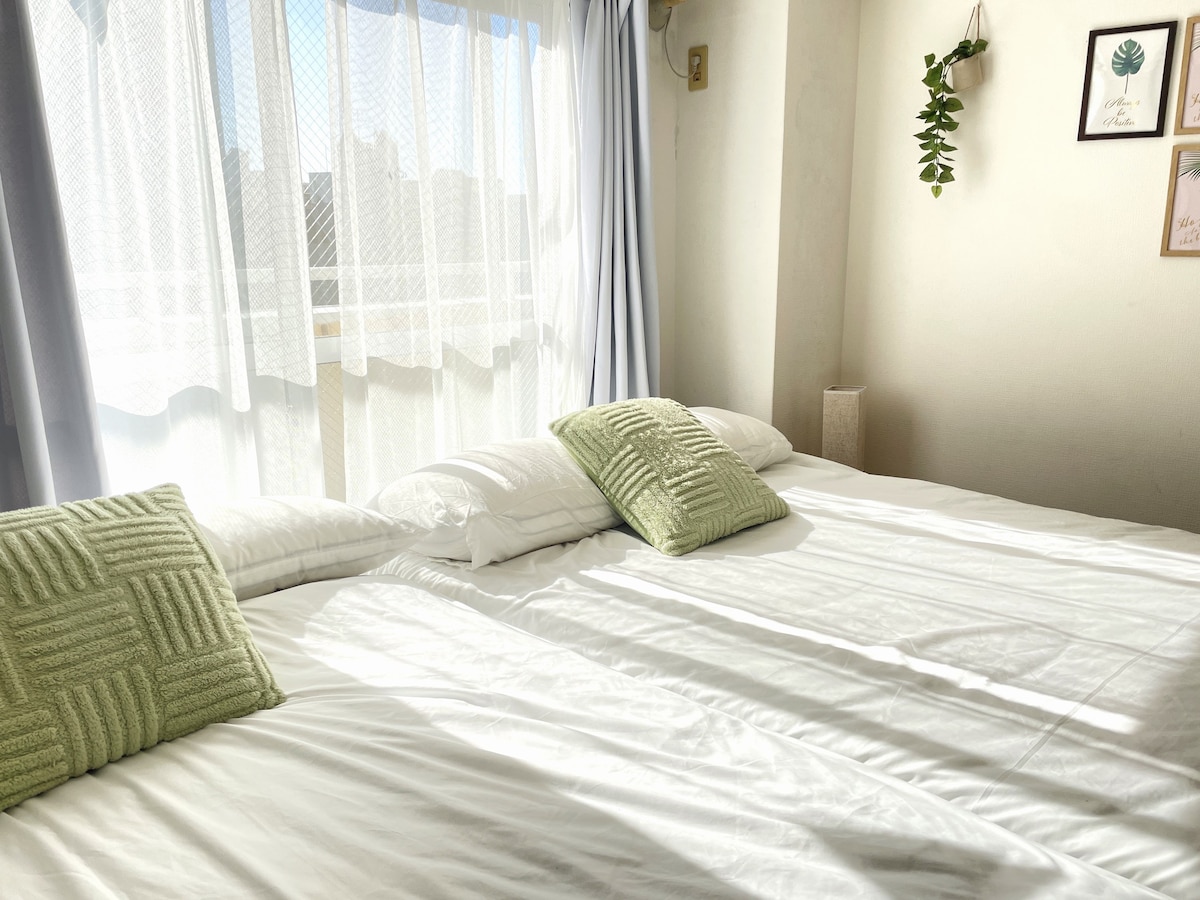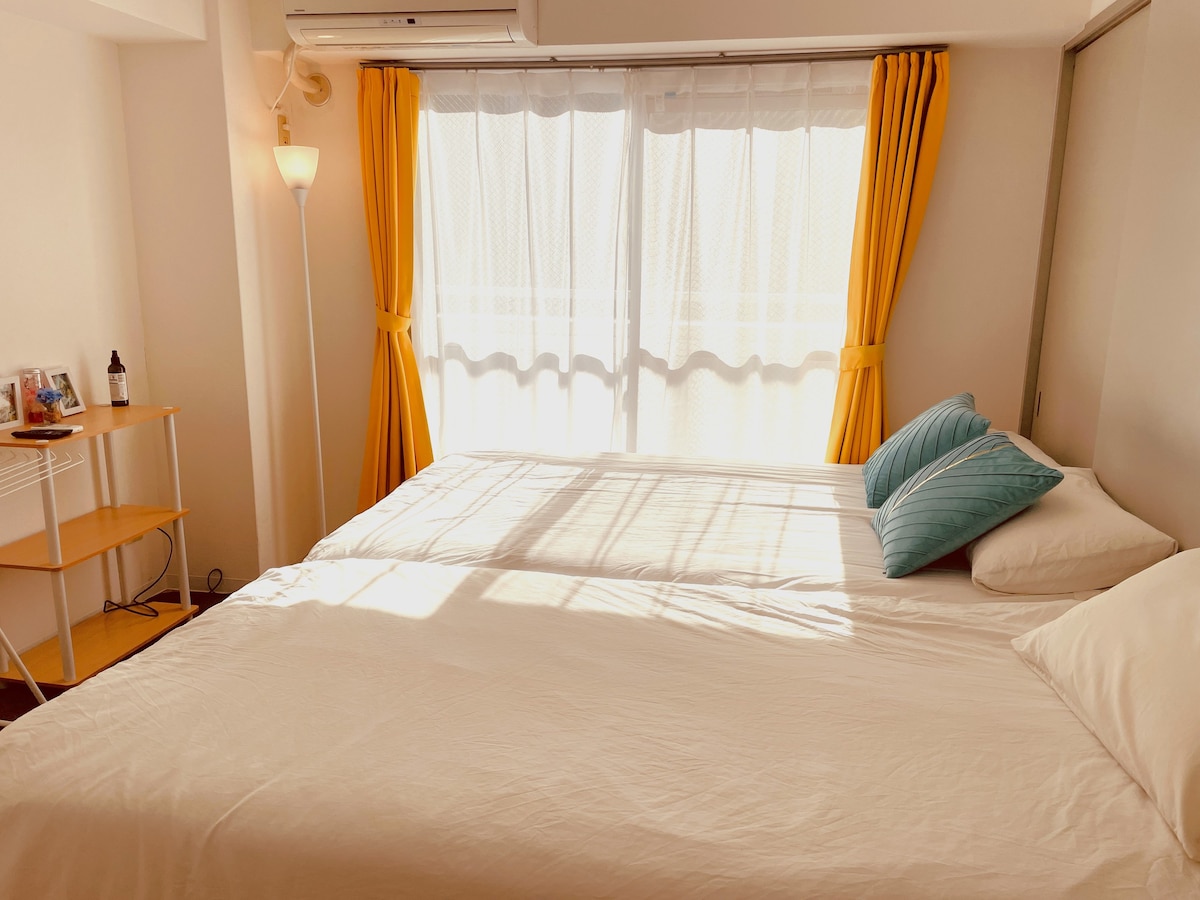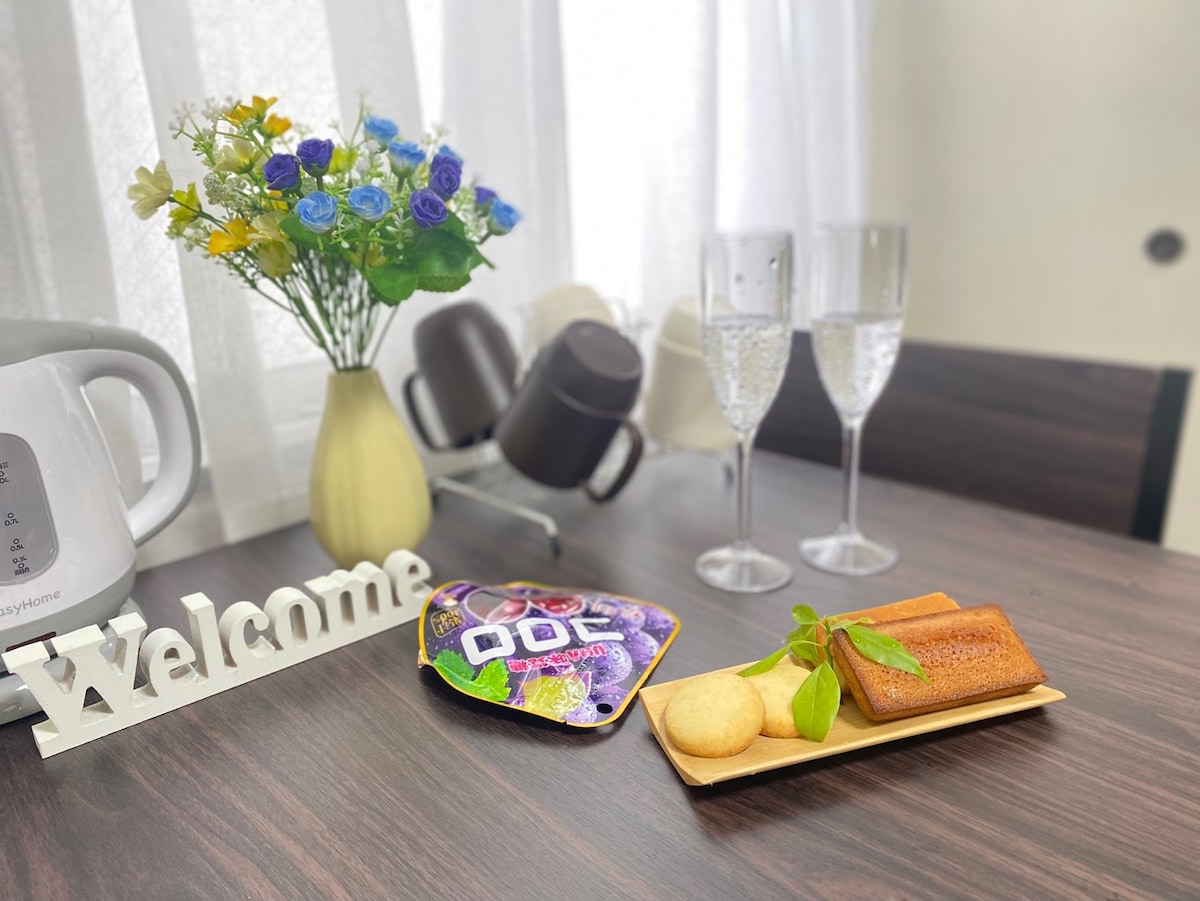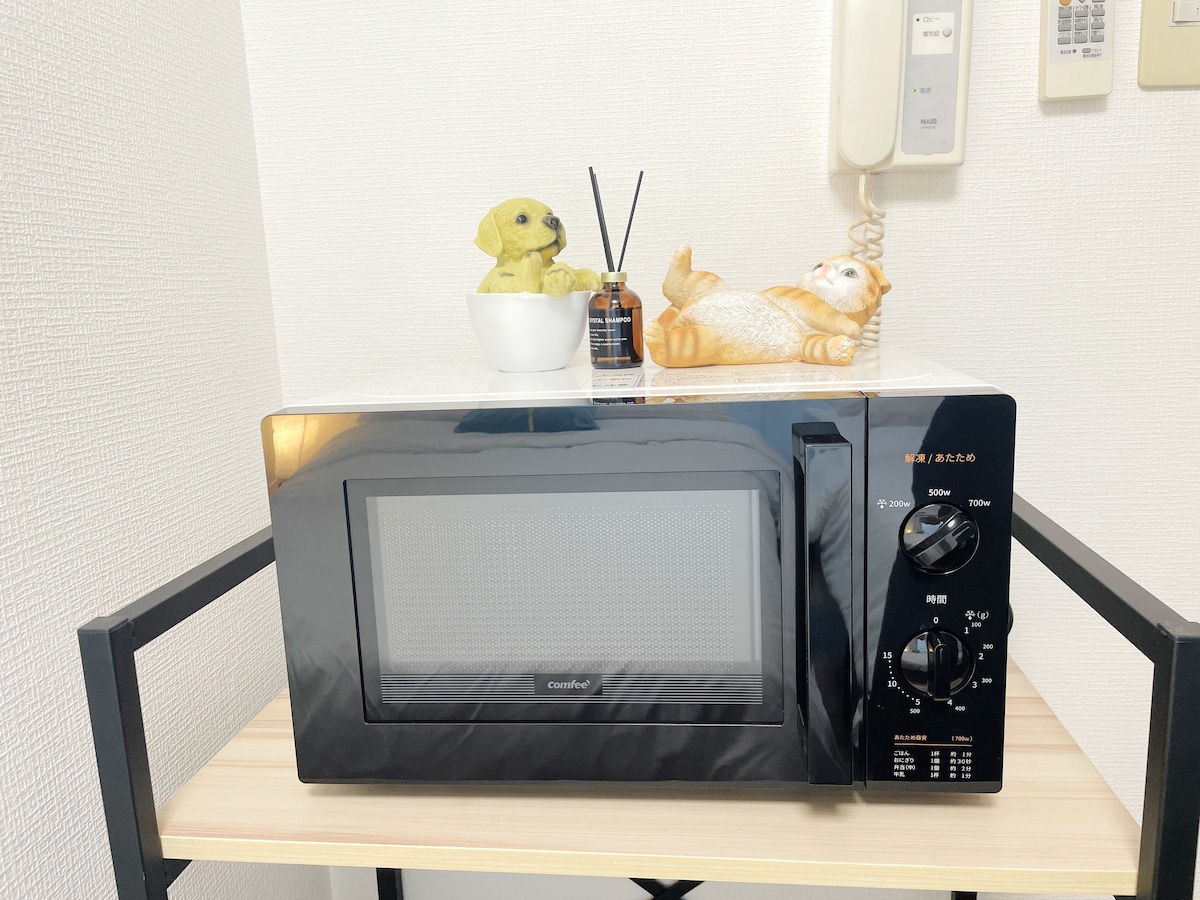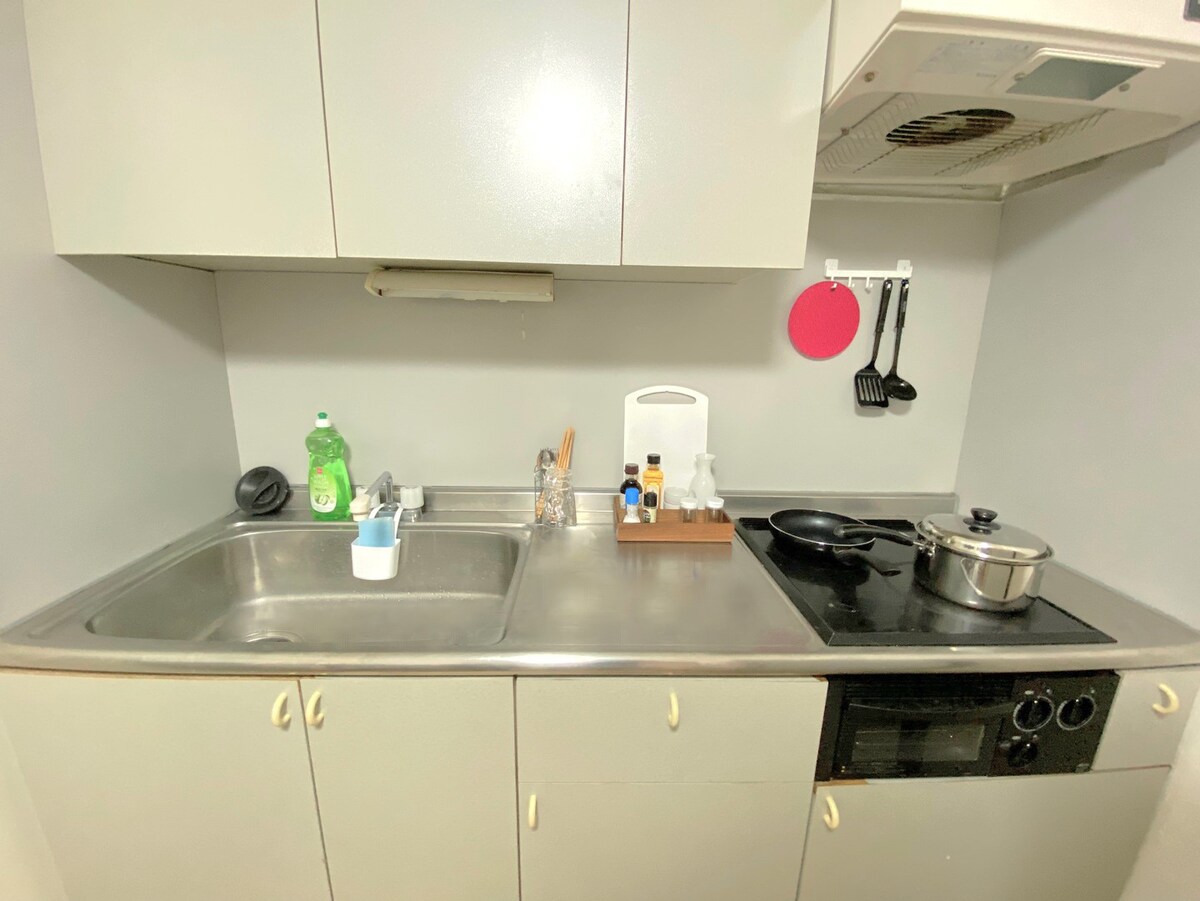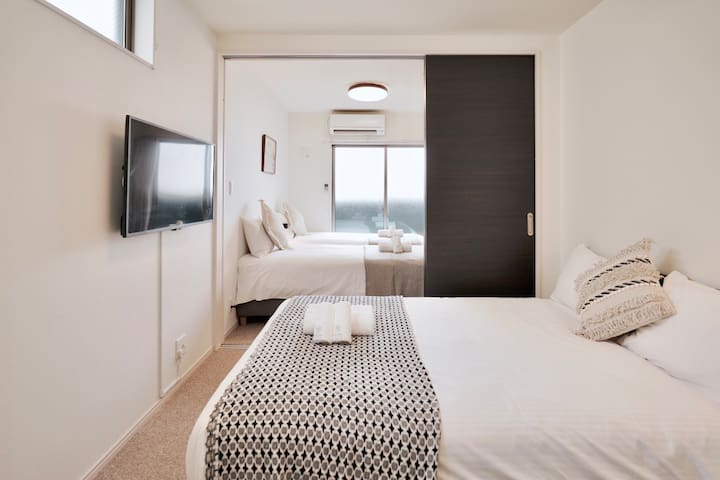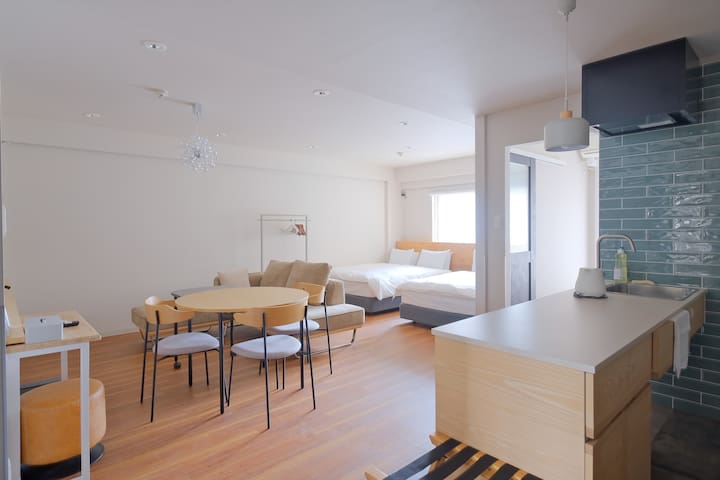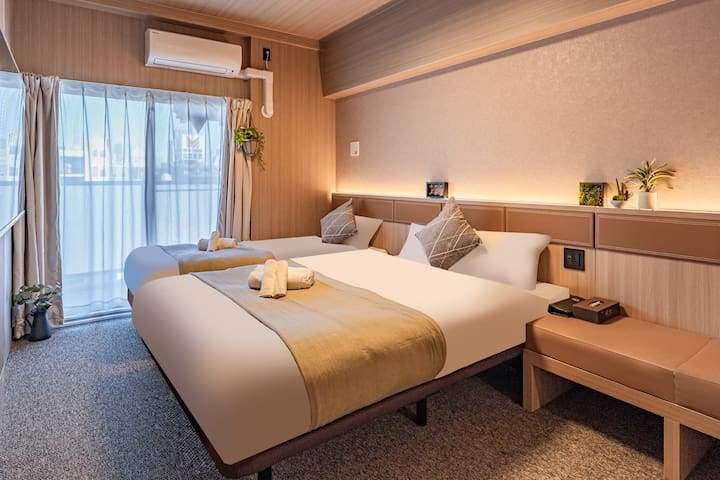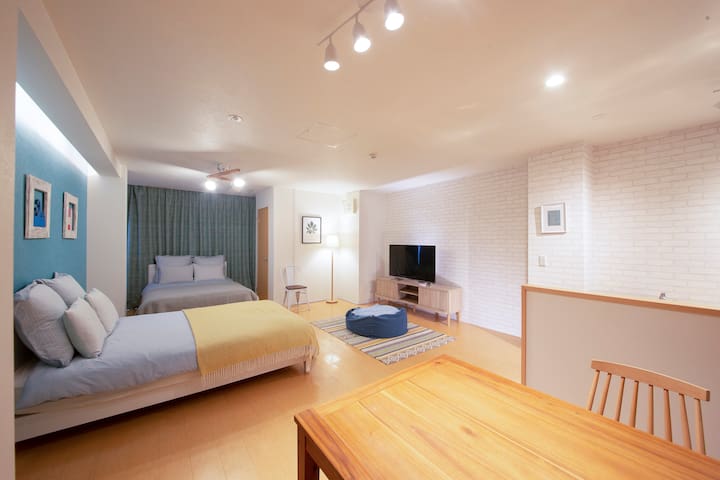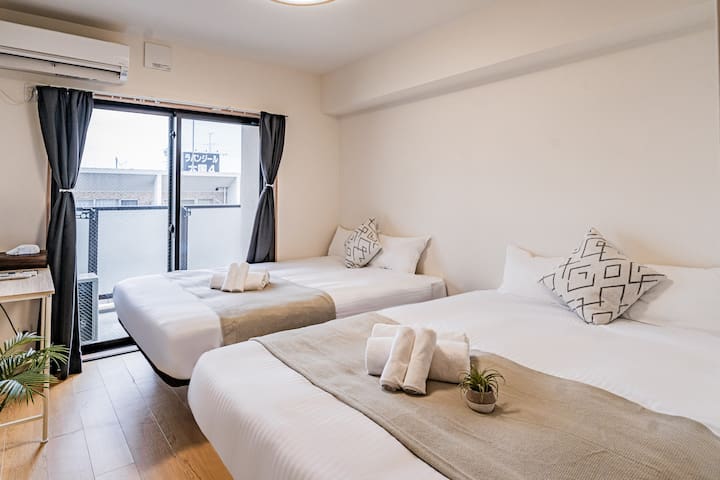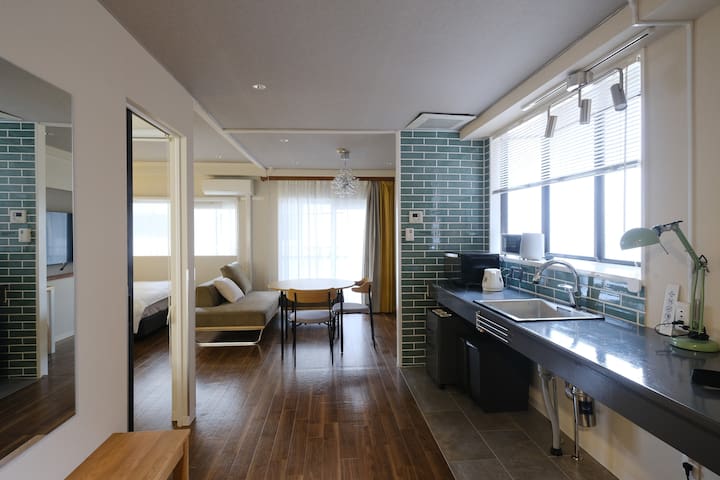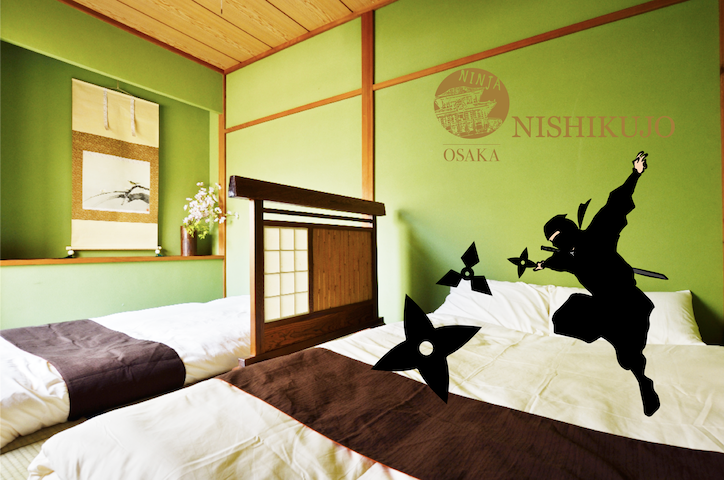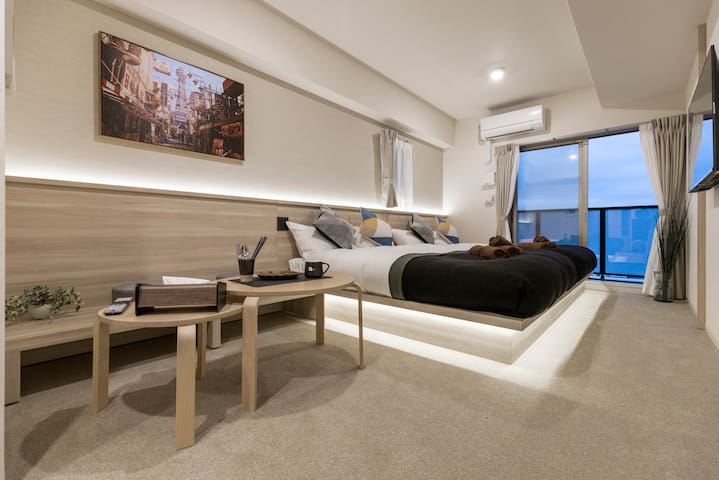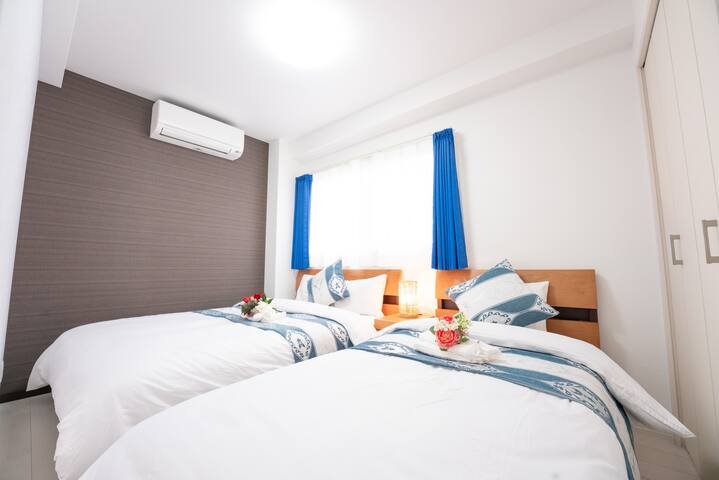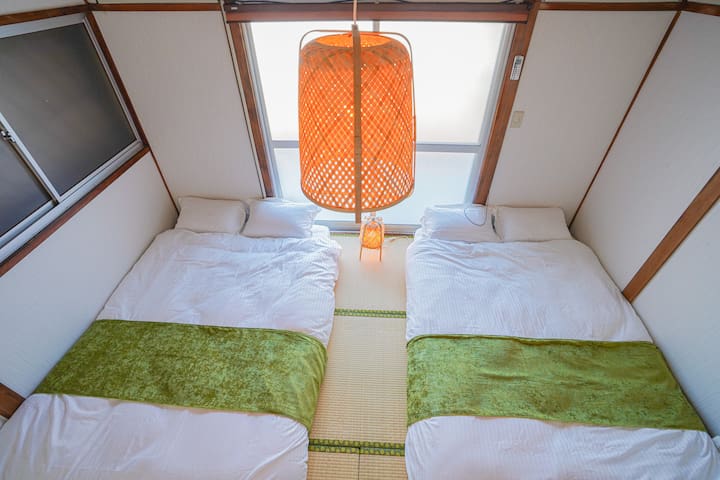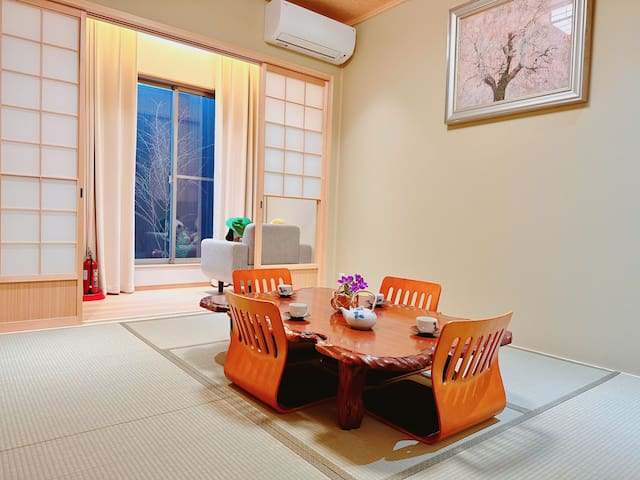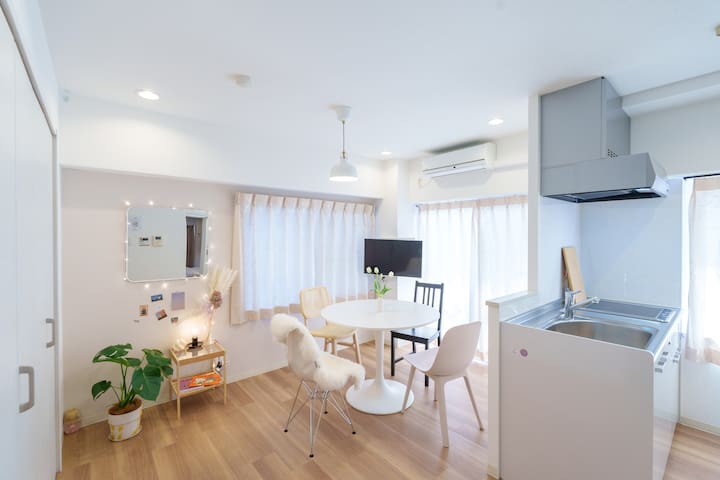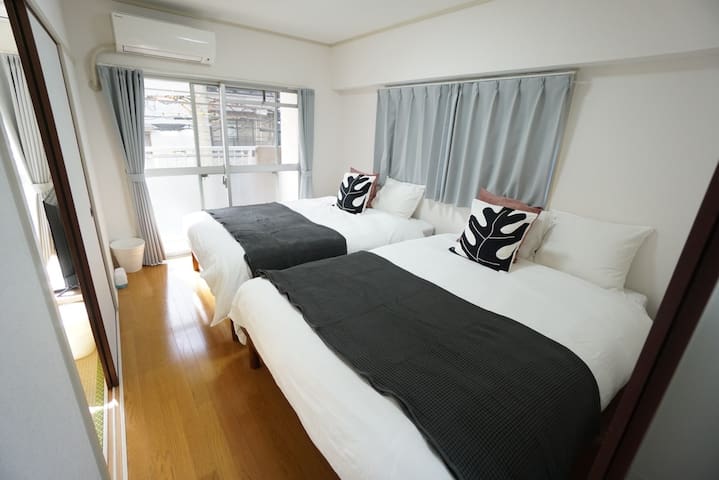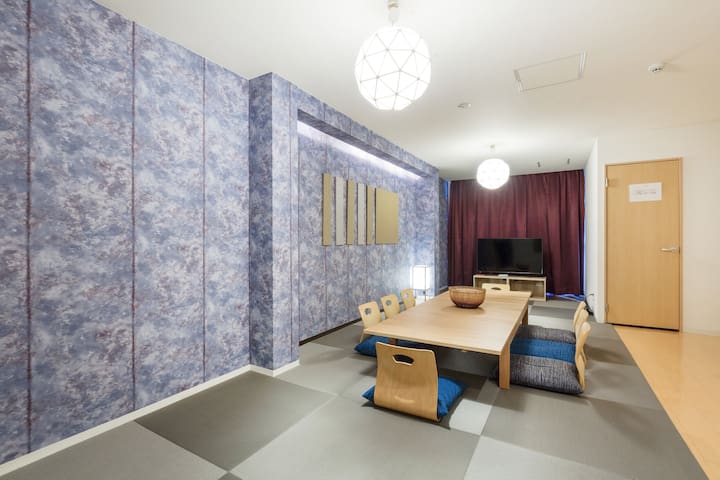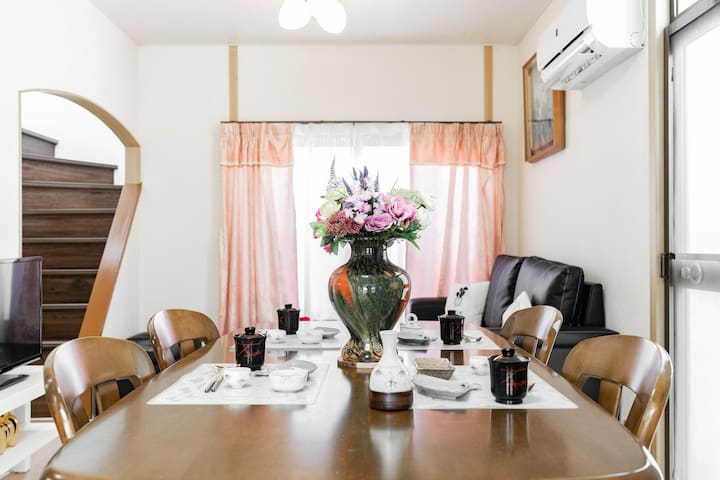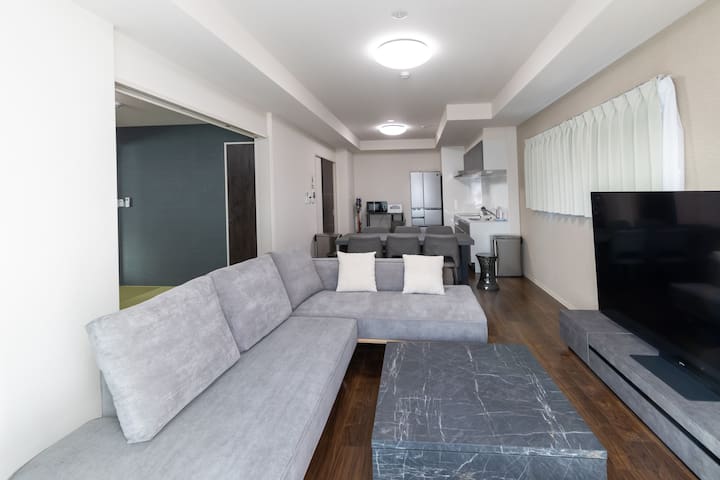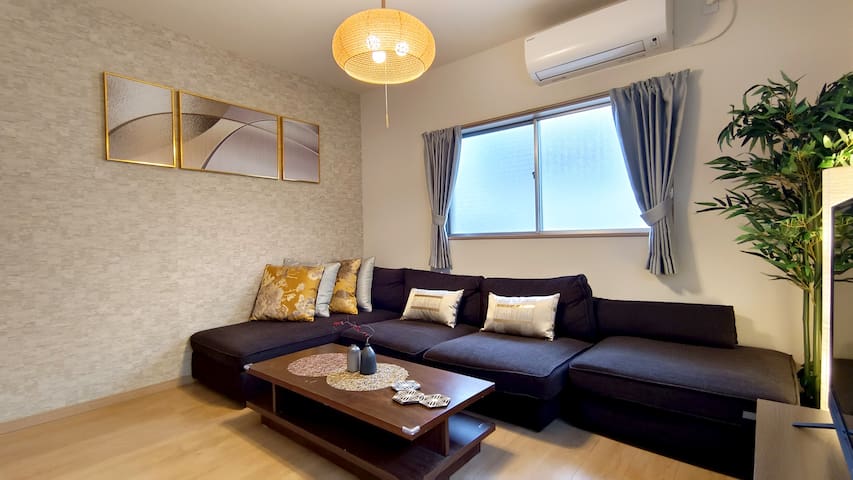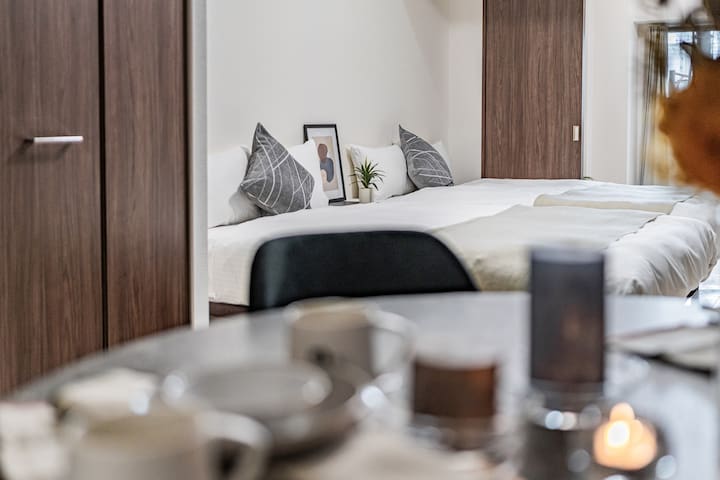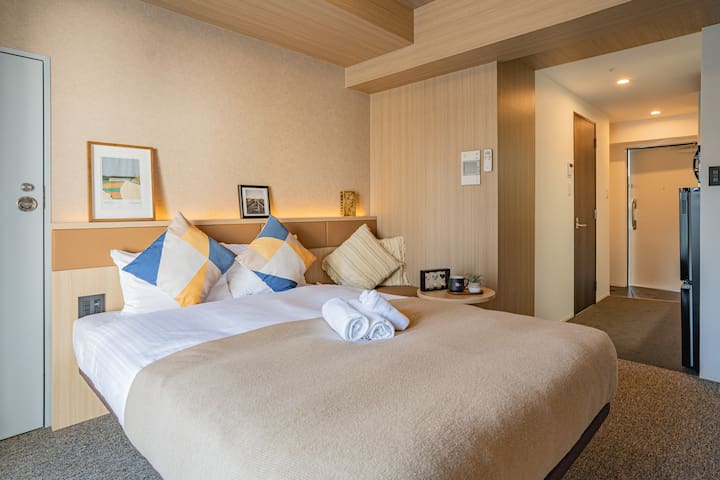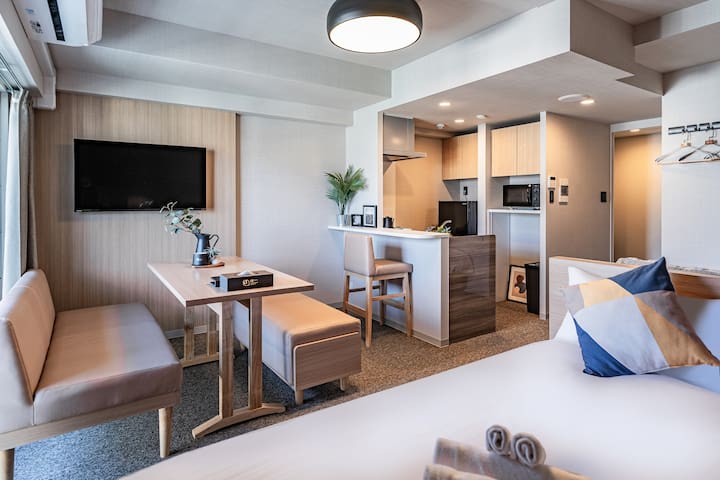浪速区 · 整套出租单元 · 2室4床1.0卫 · 可住7人 · ※애완동물 동반가능※ 깔끔한 숙소 JR난바역 9분 사쿠라가와역 9분 4개의 더블침대
浪速区整套出租单元2室4床1.0卫可住7人 · ※애완동물동반가능※깔끔한숙소JR난바역9분사쿠라가와역9분4개의더블침대

깨끗하고 쾌적한 공간 ※애완동물 동반가능※ 연인끼리의 여행, 가족끼리의 여행, 친구들과의 여행에 적합합니다. 지하철역에 쉽게 접근할 수 있습니다. ★아시하라초역 6분★ ★오시하라바시역 6분★ ★사쿠라가와역 9분★ ★JR 난바역 9분★ 건물 근처에 유료주차장이 있습니다.
房客评价
Miyu as a host is amazing and really responsive! the apartment is situated in a convenient location to the Osaka Loop station and local convenience stores. only small bug bear is the shower, where it is plumbed directly into the sink faucet. The mixer has difficulty in blending hot and cold, and you're left qith either scalding hot or freezing cold water, but it is only a small issue. the complex is safe and secure. I had a lovely stay with very comfortable bedding and pillows. Thank you Miyu!
房源位置
OSAKA, a City Boasting 1,400 Years of History
Since time immemorial, Osaka has been a place where people from regions near and far gather. It sits on the Seto Inland Sea, a heavily-trafficked body of water, and faces Osaka Bay at a place where rivers flowing from the inland converge. In ancient days when transit by car or train was still an impossible dream, Osaka had developed as an economic center and as a gateway welcoming traders and travelers from all across Asia.
The origins of Osaka can be traced back to the 5th century.
At this time, the area prospered as the economic and political heart of Japan in antiquity. Thought to be located somewhere near modern-day Chuo-ku in Osaka City, Naniwa-zu was at the time a newly-developed port used as an entryway into Japan from Korean, China, and other countries in Asia. The visitors coming to Osaka from elsewhere in Asia are said to have brought much to the area: cutting-edge technology for creating new, novel crafts and pottery, techniques for forging, and the newest methods and know-how. It's around this time that Buddhism began spreading in Japan, a nation that had until then not yet received the sutras. All these techniques and learnings were introduced into the other regions of Japan with truly shocking speed.
Buddhism spread across the nation as well, and in 593 Prince Shotoku erected Shitenno-ji Temple in modern-day Tennoji-ku. With these developments, Osaka transformed into an international metropolis engaged in exchange with other Asian nations. Come 645, Emperor Kotoku moved the capital from Nara to Osaka. Nowadays, right here in the city you can take a tour of the palace that Emperor Kotoku built, over at the Remains of Naniwa-no-Miya Palace Park. It's considered Japan's oldest imperial palace. However, the capital would be moved again and again: First to Nagaoka-kyo (Kyoto), then to Heijo-kyo (Nara), Heian-kyo (Kyoto), Kamakura (south of Tokyo), and finally to Edo (modern-day Tokyo). Even after the capital was relocated, Osaka continued to develop as Japan's second-ranked city: In particular, it became the face that the nation showed the rest of Asia, playing an important part as a place of commercial and cultural exchange.
Hideyoshi's Castle Town
In 794, the capital was at Heian-kyo. The period that follows is called the Heian period (794–1185), and during this time countless Buddhist temples were established in Osaka and Kyoto. It was in this era, as well, that women's culture flourished, from arts and crafts to literary works like Murasaki Shikibu's 11th-century "Tale of Genji." However, in the latter half of the 12th century factions arose working to overthrow the ruling Taira clan, with the Minamoto clan emerging as the victors. Minamoto no Yoritomo took power and established the Kamakura shogunate. From this period, conflicts emerged more and more often as the country moved toward the Sengoku (or Warring States) period, which spanned from the mid-15th to the beginning of the 17th centuries.
Around the time of the 14th century, Osaka and much of the area around it was devastated by war. In 1496, the monk Rennyo began building Ishiyama Gobo on the Uemachi Plateau, which extends north to south from Osaka Castle to Tenmabashi in central Osaka. Ishiyama Gobo was a temple and a monastery and so has come to be called Ishiyama Hongan-ji Temple. However, to halt the tide of war, it was also constructed as a fortress.
In the latter half of the Muromachi period (1336–1573), Oda Nobunaga decided to test his superlative military might against Ishiyama Gobo on Osaka's Uemachi Plateau. As can plainly be seen even now in modern Osaka, the plateau rises up gently from the surrounding area, providing an excellent location overlooking the region. What's more, at the time Osaka Bay came right up near the western edge of the plateau, so that even if an attacking force were to invade, the lay of the land made it a literal and figurative uphill struggle. Another point in its favor was that it was sandwiched between the Yodogawa and Yamatogawa rivers at a time when waterways were the chief commercial and transport arteries. Since there was also a lot of trade coming in from the Seto Inland Sea, the area could also dominate economically as a trading hub. On top of it all, the terrain did not present an easy target for invasion. Oda Nobunaga was confident that he could bring down Ishiyama Gobo and take control of not only Osaka, but Japan and the neighboring nations beyond.
He spent over a decade in continued warfare against the fortress-temple until it was nearly burnt to the ground—Osaka was under Nobunaga's control at last. After that, Nobunaga's successor Toyotomi Hideyoshi, who used Osaka as his base of operations, began his governance of Japan. During 1583 in the Azuchi-Momoyama period (1574–1600), Hideyoshi built Osaka Castle. A moat was dug around the castle during a large-scale construction project—the waterways around Osaka were widened, and the area developed as a transport hub connected to the sea. However, the Siege of Osaka's Winter Campaign in 1614 and Summer Campaign in 1615 destroyed the castle together with the surrounding town and also lead to the fall and ruin of the Toyotomi clan.
Economic and Cultural Hub
When the Tokugawa clan seized control of the nation, the political center was moved to Edo (present-day Tokyo). With this, the country also entered the sakoku ("chained nation") period, during which entry to or exit from Japan was strictly prohibited. Osaka, though nearly razed to the ground, quickly rose from the ashes thanks to the temperament of the Osakan people and once again developed into an economic metropolis. In this era, the city that came to be called "tenka no daitokoro" ("kitchen of the nation") was Osaka itself, many hundreds of miles away from Edo. This was because the buying and selling of important goods, including rice and other foods, was frequently conducted in this region. Rice was shipped out all across Japan from Osaka, providing food to the nation. In time, it would also become a major exporter of goods overseas.
These economic advances caused Osaka to develop its own unique culture. Splitting from traditional practices, there was also the growth of popular arts and culture that could be enjoyed by the masses. These included a type of puppet theater called jorurui (thought to be the origin of bunraku puppet theater), noh theater, and a uniquely Osakan take on kabuki. Osaka also made contributions to education: Schools established in the city produced many scholars who would go on to have a profound influence on the Japan of the time. One example of this was Tekijuku, founded in 1838 for the study of Western science and medicine. Come the mid-19th century, Japan would end its isolation and come roaring into modernity, and among the graduates of Tekijuku were those who would contribute to opening up the country to the world and reforming the nation's government. Later on, Tekijuku would become Osaka University.
Manchester of the East
The Meiji Reformation, which began in 1868 following the fall of the Tokugawa clan, was the largest restructuring in Japanese history. The capital, now called "Tokyo," boomed as a new economic center: Osaka, city of trade, began to stagnate. It's around this time Osaka experimented with becoming a city of industry. Thick clouds of smoke billowed from the chimneys of industrial factories, and by the end of the 19th century Osaka was mockingly called "the City of Smoke." The nickname that followed was "Manchester of the East."
In 1889, Osaka was formally incorporated as a municipality. Very soon after being officially recognized as a Japanese city, it hosted the 5th Domestic Industrial Expo (1903) in the Tennoji area. Collecting together top-quality industrial techniques and products, the event attracted from across Japan the elite of the industrial world, eager to acquire cutting-edge technologies. In the same year, Osaka became the first city in the country to operate a municipal streetcar system. Until 1925, Osaka was the most populous city in Japan and the 6th largest in the world.
The Devastation of WW II and Post-war Recovery
During the Second World War, a third of Osaka was destroyed owing to American bombing raids. Many commercial and industrial areas were targets for these airstrikes. However, post-war reconstruction planning and the natural optimism of Osakans came together to bring the city back to its pre-war vitality. Even now, there are a variety of companies and entrepreneurs active in Osaka. These many businesses (and business people) contribute to the economic strength of the city, and now as in the past Osaka is the core metropolis of western Japan.
For example, in 1970 Osaka was chosen as the host city for Asia's first World Exposition. Since then, the city has welcomed every kind of event, from international exhibitions and shows to fairs and global meetings. It even hosted an APEC summit in 1995. There's everything you can imagine here in Osaka: conference and meeting facilities like the Osaka International Convention Center to welcome guests from across the globe, top-class hotels, delicious cuisine, a unique history and culture, and countless options for entertainment and leisure. A world-class metropolis with massive sway in modern Asia, Osaka holds its head high on the international stage.
Famous Places/tourist attraction nearby
Dotonbori Glico sign
Shinsaibashisuji Shopping Street
Shinsaibashi PARCO
Shinsaibashi BIG STEP
Etoile Shinsaibashi
Daimaru Shinsaibashi
Americamura
Europa-mura
Don Quijote Dotonbori
Kani-Doraku Dotonbori
Kinryu Ramen Dotonbori
Ebisubashi Suji Shopping Arcade
Sennichimae Doguya-suji Shopping Street
Kuromon Market
Tsutenkaku Tower
Namba Marui
Takashimaya Osaka
Namba CITY
Namba Parks
Nansan Street Shopping Arcade
Bic Camera Namba
Joshin
Yodobashi Camera
Bic Camera Namba
Kyocera Dome Osaka
AEON MALL
★아시하라초역 도보 6분★
★오시하라바시역 도보 6분★
★사쿠라가와역 도보 9분★
★JR 난바역 도보 9분★
★교세라 돔 오사카 자동차로 8분★
건물 근처에 유료주차장이 있습니다.
글리코상 1.7km
해유관 6.7km
교세라돔 1.9km
다이마루 2.1km
쓰텐카쿠 2.1km
오사카성 5.9km
우메다 스카이트리 5.2km
유니버셜 스튜디오 재팬 7km
나라 35.1km
교토 50.5km
爱彼迎旅行保障

安心房源保障 人工审核所有中国房源信息,入住更安心

专业中文客服 通过客服电话、线上客服、智能客服助手等渠道,为您提供全方位服务

旅行安全保障 多重风险控制设计,全方位保障您的行程安全
